History
Origins of the clan
The village of Sai in Normandy is believed to have given its name to Seton in Scotland by 1150 when Alexander de Seton witnessed a charter by David I of Scotland. [4] The Chiefs of Clan Seton share a common origin with the Chiefs of Highland Clan Gordon. [5]
Wars of Scottish Independence
Sir Christopher Seton (died 1306) secured the family's fortunes by marrying a sister of Robert the Bruce. In March 1306 he was a witness at Bruce's coronation in Scone. [4]
Seton is also have said to have saved the king's life when he was unhorsed during the Battle of Methven in June 1306. [4] Seton was captured at the battle by the English and was executed in London with great brutality. [4] In 1320, Sir Alexander Seton, who was probably Sir Christopher's brother, signed the Declaration of Arbroath that asserted Scottish independence. [4] Sir Alexander Seton was later Governor of Berwick from 1327 until 1333, when the town surrendered to the English. [4]
The English had already hanged Seton's son whom they had held as a hostage. [4] Seton's remaining two sons were also both killed – one drowning in a sea battle with an English fleet and the other was killed fighting Edward Balliol. [4] His daughter, Margaret (who married Alan de Wyntoun, a paternal cadet of the Seton family), [6] [7] therefore succeeded to the estates and it was her son who took the Seton surname and was created the first Lord Seton. [4]
15th and 16th centuries
William Seton, 1st Lord Seton attended the coronation of Robert II of Scotland. [4] One of Lord Seton's sons married Elizabeth of Gordon and became ancestor to the Earls and Marquesses of Huntly, chiefs of Clan Gordon. [4] (Alexander Gordon, 1st Earl of Huntly was born Alexander Seton but adopted his mother's surname).
George Seton, 5th Lord Seton was a favourite of James IV of Scotland and died with him at the Battle of Flodden. [8] [4] The Setons were supporters of Mary, Queen of Scots, and in 1557 George Seton, 7th Lord Seton attended the queen's wedding to the Dauphin of Viennois. Seton became her Privy Councillor, Master of the Household and a close personal friend. [4] Seton helped the queen to escape on the night of the murder of her secretary, David Rizzio, firstly to Seton Castle in East Lothian and then to Dunbar. [4]
When the queen's husband, Henry Stuart, Lord Darnley, was killed she again turned to Seton for help and it was in Seton Castle that the marriage contract with James Hepburn, 4th Earl of Bothwell was sealed. [4] In 1568, when the queen was imprisoned in Lochleven Castle it was Seton, with two hundred lancers, who aided her escape. [4]
After the queen was defeated at the Battle of Langside in 1568, Seton retired to Flanders where he tried to enlist in foreign service. Two years later he returned to Scotland and was one of the judges on the trial of the Earl of Morton who was accused of complicity in the murder of Darnley. [4] Seton's portrait now hangs in the National Portrait Gallery. [4] He was succeeded by his second son, Robert, who James VI of Scotland created Earl of Winton in 1600. [4]
17th and 18th centuries
The Earl of Winton's brother, Alexander Seton, was created Lord President of the Court of Session which is Scotland's highest judicial office and later Chancellor of Scotland. In 1606, Alexander Seton was created Earl of Dunfermline. [4]
The Setons were staunch Jacobites and James Seton, 4th Earl of Dunfermline forfeited his title for supporting John Graham, 1st Viscount Dundee in 1689 as did George Seton, 5th Earl of Winton after the Jacobite rising of 1715. [4] Another branch of the clan, the Setons of Abercorn, were created Baronets of Nova Scotia in 1663. [4] Sir Alexander Seton, 1st Baronet was appointed to the Supreme Court bench in 1677 and was created a Baronet of Nova Scotia in 1684. [4]
Some members of the family moved to France, where they belonged to the Scottish Guard of the King. [9] In particular Jacques Seton, sr de Lavenage becomes a lieutenant of the Scottish Guard, but becomes famous for another reason: since Mazarin wants French people to replace Scottish ones, he loses part and then the entirety of his job. Mazarin then proposes to him to be in charge of the French printmaking system, which was till then a free trade (1660). But the printmakers protested, the idea failed and printmaking was confirmed a free trade, by royal edict. [10]
Earl of Eglinton is a title in the Peerage of Scotland. It was created by James IV of Scotland in 1507 for Hugh Montgomerie, 3rd Lord Montgomerie.
The title Earl of Winton was created in the Peerage of Scotland and later in the Peerage of the United Kingdom. It is currently held by the Earl of Eglinton.
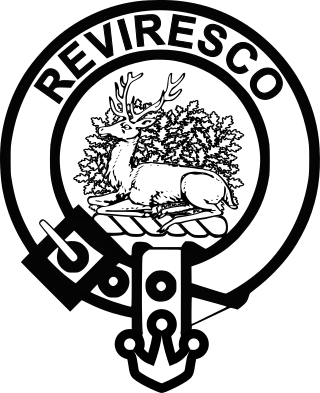
Clan Maxwell is a Scottish clan of the Scottish Lowlands and is recognized as such by the Lord Lyon King of Arms. However, as the clan does not currently have a chief, it is considered an armigerous clan.

Clan Gordon is a Highland Scottish clan, historically one of the most powerful Scottish clans. The Gordon lands once spanned a large territory across the Highlands. Presently, Gordon is seated at Aboyne Castle, Aberdeenshire. The Chief of the clan is the Earl of Huntly, later the Marquess of Huntly.
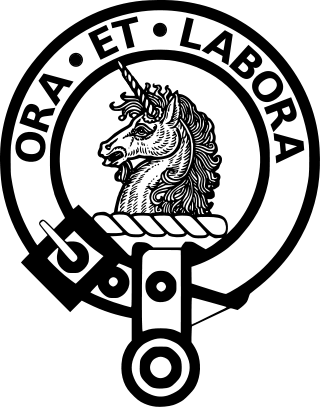
Clan Ramsay is a Lowland Scottish clan.

Clan Sutherland also known as House of Sutherland is a Highland Scottish clan whose traditional territory is the shire of Sutherland in the far north of Scotland. The chief of the clan was also the powerful Earl of Sutherland, however in the early 16th century this title passed through marriage to a younger son of the chief of Clan Gordon. The current chief is Alistair Sutherland who holds the title Earl of Sutherland.

Clan Houston is a Scottish clan. The clan does not have a chief therefore it was considered an Armigerous clan.
Seton is the surname of a prominent Scottish Lowlands family, Clan Seton, and may refer to:

Clan Ogilvy, also known as Clan Ogilvie, is a Highland Scottish clan. Originating from Angus, Scotland, the progenitor of the Clan received a barony from King William the Lion in 1163. In 1491, King James IV elevated Sir James Ogilvy as Lord Ogilvy of Airlie.

The Forresters are an ancient and noble clan of the Scottish Lowlands.

Clan Maitland is a Lowland Scottish clan.

Clan Stewart is a Scottish Highland and Lowland clan. The clan is recognised by Court of the Lord Lyon; however, it does not have a Clan Chief recognised by the Lord Lyon King of Arms. Because the clan has no chief it can be considered an armigerous clan; however, the Earls of Galloway are now considered to be the principal branch of this clan, and the crest and motto of The Earls of Galloway's arms are used in the Clan Stewart crest badge. The Court of the Lord Lyon recognises two other Stewart/Stuart clans, Clan Stuart of Bute and Clan Stewart of Appin. Clan Stuart of Bute is the only one of the three clans at present which has a recognised chief.

Clan Wemyss is a Lowland Scottish clan.
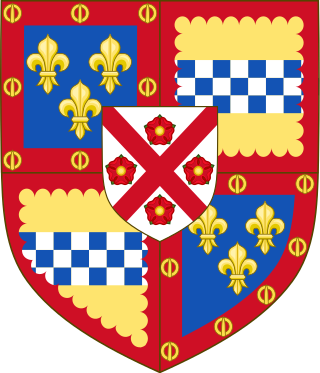
John Stewart, 1st Earl of Lennox was a Scottish earl. He was known as Lord Darnley and later as the Earl of Lennox.
There have been four baronetcies created for persons with the surname Seton, all in the Baronetage of Nova Scotia. As of 2008 one creation is extant, one dormant and two extinct.

Clan Crawford is a Scottish clan of the Scottish Lowlands. The clan is of Scandinavian and Anglo-Saxon origin. There was in the early 18th century a mistaken belief that the clan had Norman origins. While historically recognised as a clan by the Court of the Lord Lyon, it is now an armigerous clan as it no longer has a chief. The last chief was Hugh Ronald George Craufurd, who sold his land and moved to Canada in 1904. He died in Calgary in 1942, leaving no male heirs.
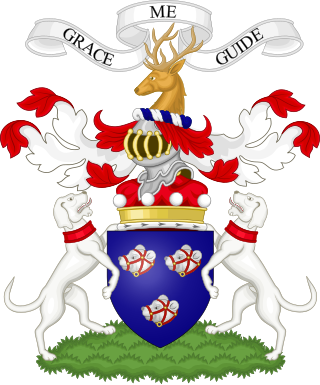
Clan Forbes is a Highland Scottish clan from Aberdeenshire, Scotland.
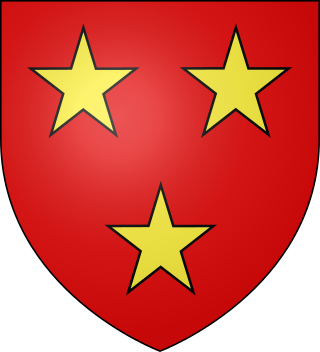
John Sutherland, was the 7th Earl of Sutherland and chief of the Clan Sutherland, a Scottish clan of the Scottish Highlands.
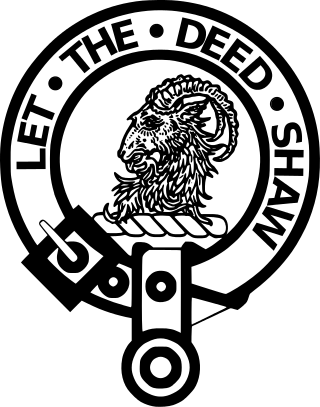
Clan Fleming is a Lowland Scottish clan and is officially recognized as such by the Lord Lyon King of Arms. However, as the clan does not currently have a chief that is recognized by the Lord Lyon King of Arms it is therefore considered an armigerous clan.

Sir Alan de Wyntoun was a Scottish soldier and crusader. He was the progenitor of three Scottish clans, being the ancestor of the Earls of Winton, Chiefs of Clan Seton, of the Earls of Eglinton, Chiefs of Clan Montgomery, and of the Earls of Huntly, Chiefs of Clan Gordon, respectively.
This page is based on this
Wikipedia article Text is available under the
CC BY-SA 4.0 license; additional terms may apply.
Images, videos and audio are available under their respective licenses.


















